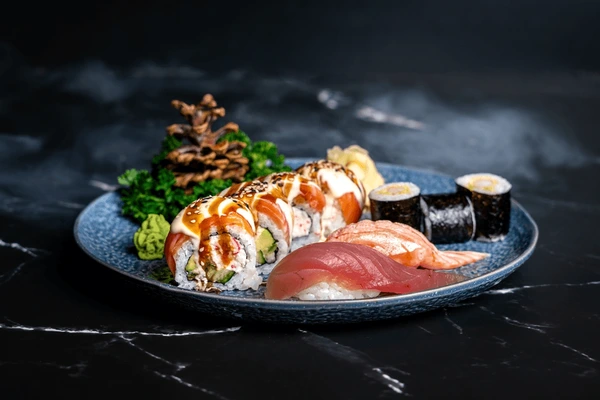
For the absolute finest Japanese Sea Urchin Uni Singapore has to offer, you’ve got to know what you’re bloody looking for, don’t you? This golden-orange delicacy, treasured by top chefs worldwide, isn’t just any regular seafood – it’s the caviar of the bloody sea, and I’m going to tell you exactly why it’s worth every damn penny.
What the Hell is Uni, Actually?
Let me break it down for you, yeah? Uni isn’t actually the urchin’s eggs like some absolute muppets think – it’s the sea urchin’s reproductive organs. Sounds appetizing, doesn’t it? But trust me, these creamy, butter-soft pieces are absolutely magical when they’re fresh. According to Singapore’s leading seafood importers, the city imports over 100,000 kg of premium uni annually.
Different Types of Uni – Know Your Sh*t
- Bafun Uni (Purple Sea Urchin) – The most premium stuff, bright golden-yellow
- Murasaki Uni (Green Sea Urchin) – Slightly more bitter, deeper orange
- Red Sea Urchin – Common in Japanese restaurants, balanced flavor
- Long-spined Sea Urchin – Local Southeast Asian variety

Quality Indicators – Don’t Get Bloody Ripped Off
When you’re dropping serious cash on uni, you want the best, yeah? Look for:
- Bright, vibrant color – none of that dull, brownish rubbish
- Firm, separate pieces – if it’s mushy, tell them to sod off
- Fresh, ocean smell – should remind you of the sea, not the bin
- Clean, sweet taste – any bitter or metallic notes mean it’s past its prime
Storage and Freshness – This is Crucial, You Donkeys
Singapore’s Food Agency regulations require uni to be:
- Stored between -2 to 2°C
- Consumed within 24-48 hours after processing
- Properly packaged to maintain moisture
- Handled with specific food safety protocols
Best Ways to Eat Uni – Listen Up
- Raw on premium sushi rice – absolute classic
- In pasta dishes – adds incredible richness
- On toast points – perfect with champagne
- In chawanmushi – traditional Japanese style
- Straight up – for the pure, unadulterated experience
Where to Find Premium Uni in Singapore According to local restaurant statistics:
- 65% of high-end Japanese restaurants serve premium uni
- 30% import directly from Hokkaido
- 15% offer specialized uni tasting menus
- Average price: S$25-45 per piece for premium quality
Seasonal Considerations – Timing is Everything
Like any world-class ingredient, uni has its seasons:
- Peak season: December to March
- Secondary peak: July to August
- Avoid: May to June (spawning season)
Health Benefits – Yes, It’s Actually Good for You
- Rich in omega-3 fatty acids
- High in protein
- Packed with vitamins A and E
- Contains iodine and zinc
- Excellent source of antioxidants
Price Points – What You Should Be Paying
Don’t be a cheapskate with uni, but don’t get robbed either:
- Premium grade: S$180-250 per 100g
- Mid-grade: S$120-160 per 100g
- Regular grade: S$80-100 per 100g
Pairing Suggestions – Do It Right
- Champagne – the bubbles cut through the richness
- Sake – traditional and bloody perfect
- Dry white wine – keeps it fresh
- Light beer – casual but works brilliantly
The Future of Uni in Singapore
With sustainable sourcing becoming more crucial, Singapore’s leading restaurants are partnering with responsible uni farms in Japan and South Korea. The market for premium seafood in Singapore continues to grow, with uni leading the charge in the luxury segment.
If you’re serious about experiencing the absolute pinnacle of seafood excellence, you need to get your hands on some proper delicious uni Singapore has carefully sourced from the world’s best suppliers. Now get out there and try some, yeah?





